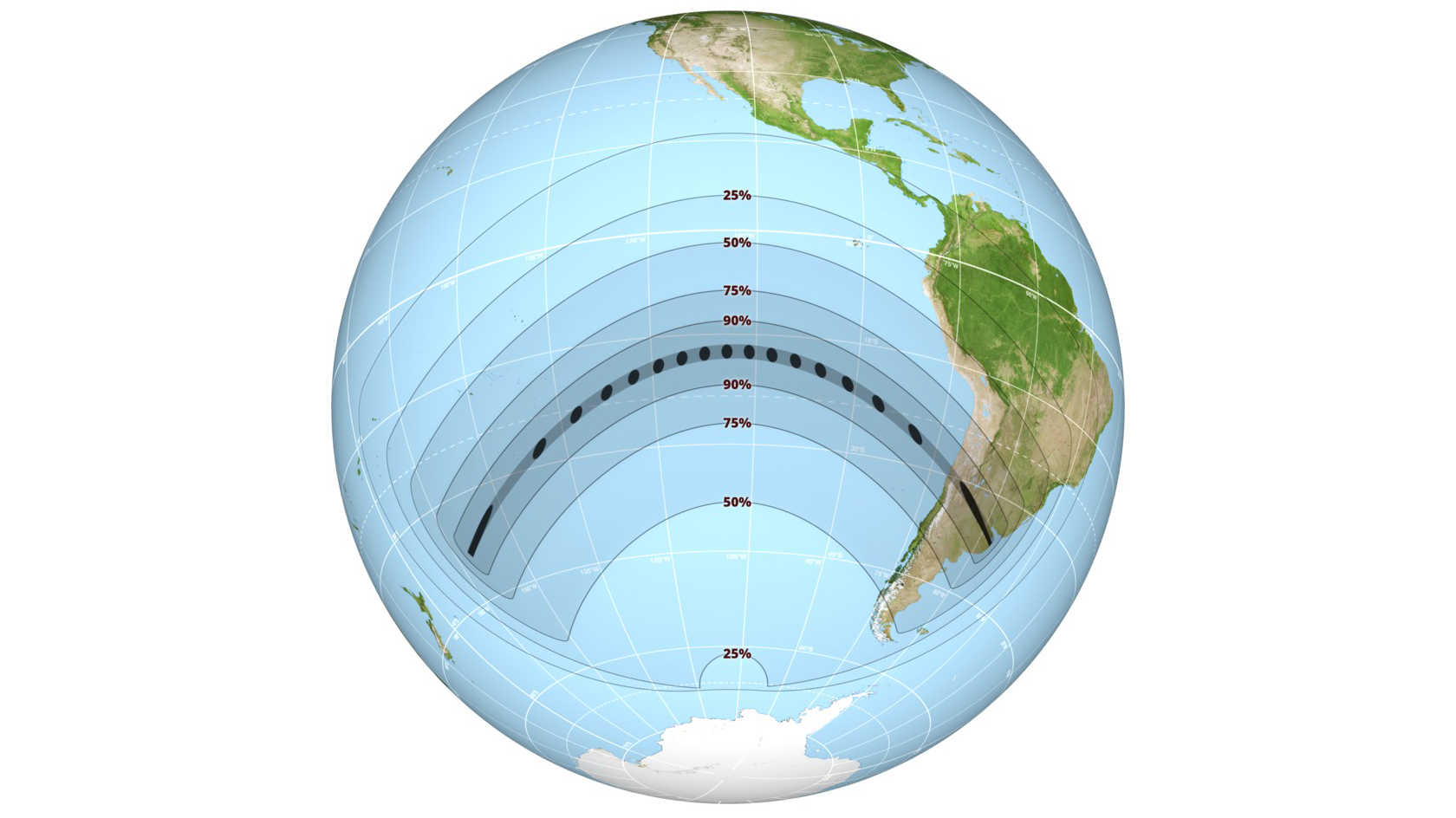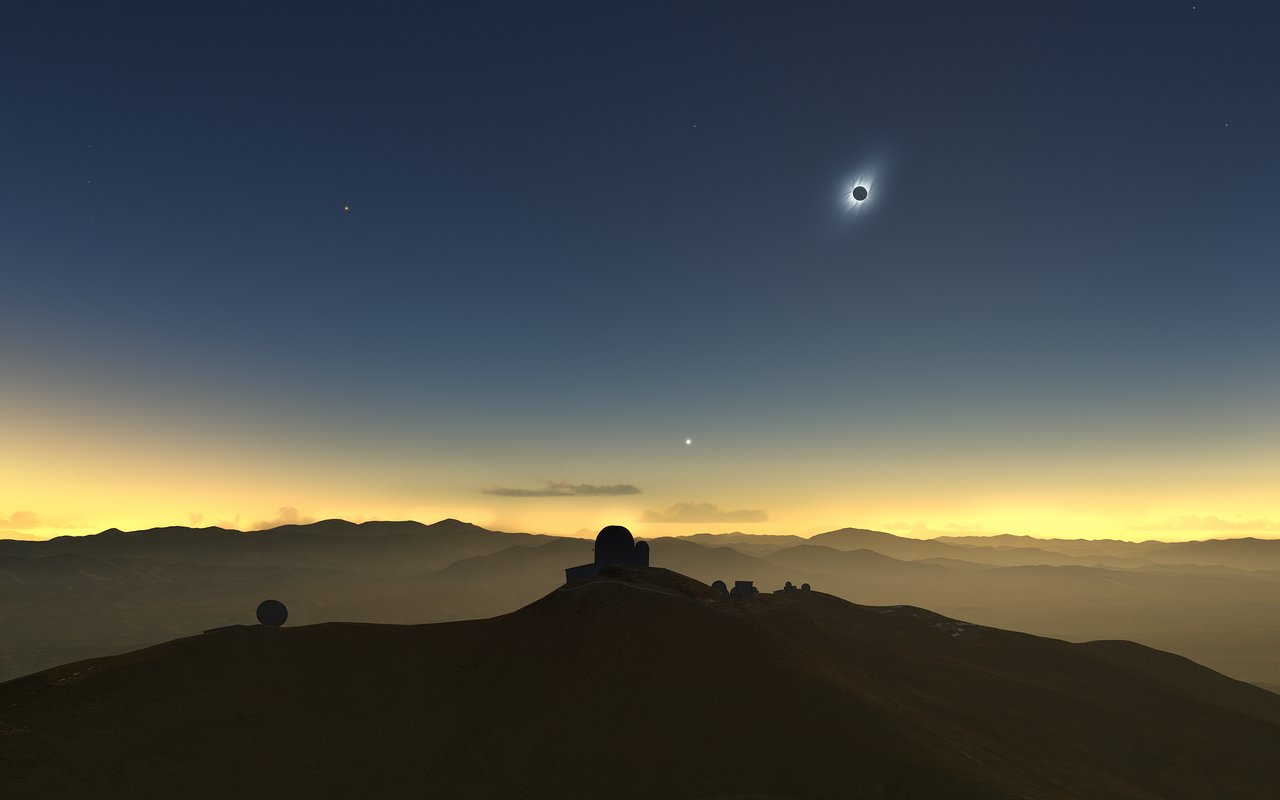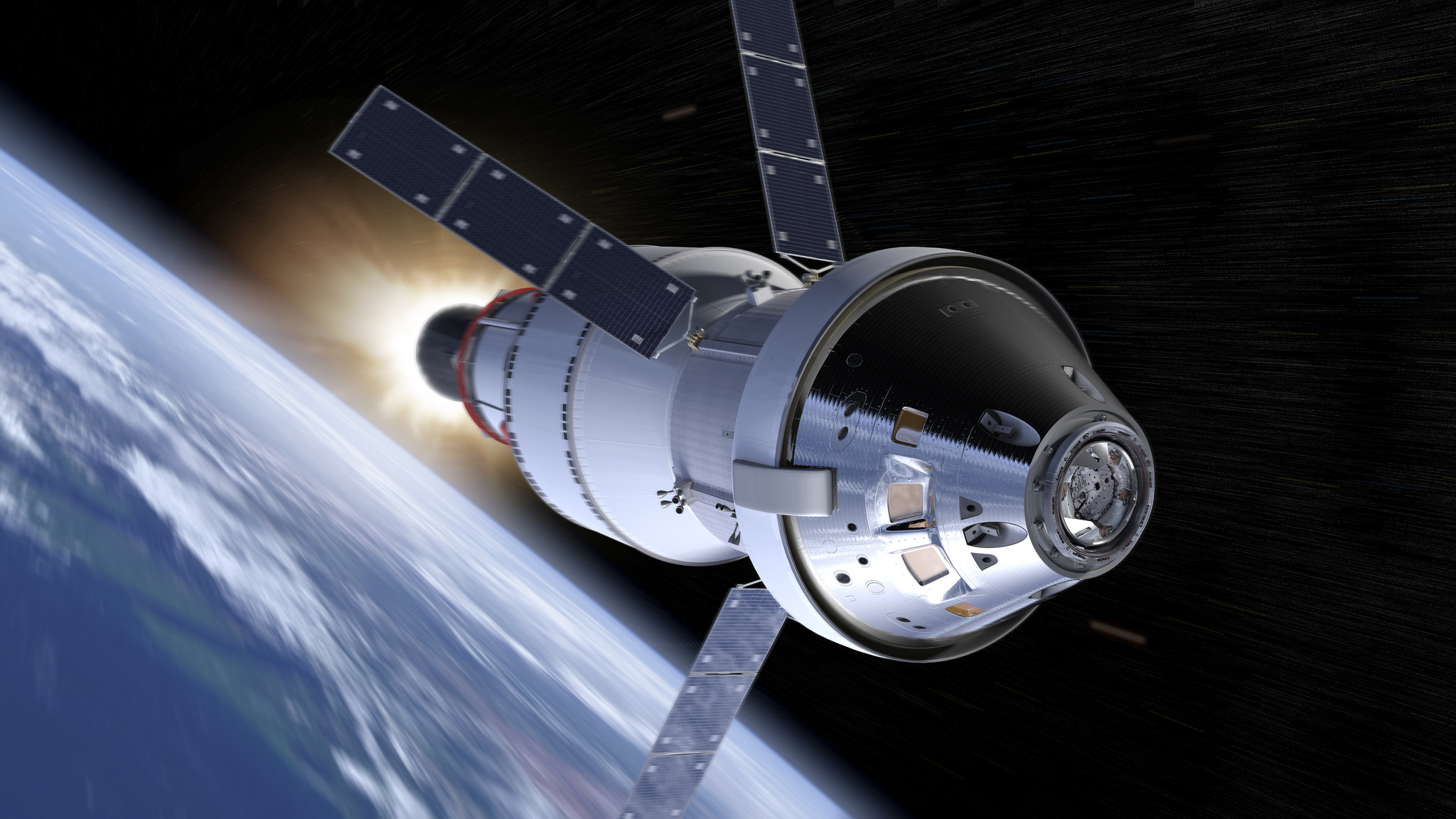Total Solar Eclipse 2019: A Complete Guide
Get ready for the Great South American Eclipse on July 2!
On July 2, millions of people people in South America will witness the day turn into night for a few minutes as the moon passes in front of the sun.
The so-called "Great South American Eclipse" will be the only total solar eclipse of 2019. During the eclipse, the moon will cast a dark shadow over parts of Chile and Argentina as it blocks out the sun. Neighboring countries will be able to see a partial eclipse.
Here is Space.com's complete guide to the "Great South American Eclipse," including viewing maps, timetables and useful tips for skywatchers and photographers. We will continue to update this page as we post more information about the eclipse.
Related: Total Solar Eclipse 2019: Path, Viewing Maps and Photo Guide
Not in the path of totality? No problem! Here's a list of webcasts where you can watch the eclipse from several different telescopes and cameras in the comfort of your own home.
If you are in the path of totality, you'll have a rare opportunity to see these stars and planets that are not otherwise visible during the daytime.
What is a solar eclipse?
About once every 18 months, the moon crosses paths with the sun in the sky, temporarily blocking the sun from view. As the moon's shadow makes its way across a portion of the planet, places in the shadow's path can experience anywhere between a few seconds and several minutes of twilight, depending on how close they are to the middle of the line of totality, or the route the moon's shadow takes across the planet.
Breaking space news, the latest updates on rocket launches, skywatching events and more!
There are two other kinds of solar eclipses — partial eclipses and annular eclipses — during which the moon does not block the sun's disk entirely. During a partial solar eclipse, the moon only passes over a part of the sun, making appear as though someone has taken a "bite" out of the sun's face.
During an annular eclipse, the moon does pass directly in front of the sun, but it appears too small to cover the whole sun. This is commonly referred to as a "ring of fire" eclipse, and it happens because the moon's distance from Earth is not constant. The moon's orbit is elliptical, not circular, and when it's farther away from Earth, it appears smaller in the sky. So, annular eclipses feature the same cosmic alignment between the sun and the moon, but they don't quite block out all the sunlight in the same way.
Where will the eclipse be visible?
The path of totality, where skywatchers can see the total solar eclipse, is a 125-mile-wide (200 kilometers) strip of landing starting near La Serena, Chile and ending just south of Buenos Aires, Argentina. A partial eclipse will be visible in Uruguay, Paraguay, Ecuador and Brazil.
Most of the eclipse will occur over the Pacific Ocean without much of an audience, but it will end with a spectacular sunset on the east coast of South America.
To figure out what your view of the eclipse will look like from a specific location, check out this cool interactive map by timeanddate.com.
What time will the eclipse happen?
The moon will first appear to make contact with the sun above the Pacific Ocean at 12:55 p.m. EDT (1655 GMT). This will be the beginning of the partial phase of the eclipse.
Totality will first be seen over Oeno Island, a British territory in the South Pacific Ocean, at 10:24 a.m. local time (1824 GMT). This first place in South America to see totality will be near La Serena, Chile, where totality begins at 4:39 p.m. local time (1939 GMT). Before that, La Serena will see a partial eclipse for over an hour as skywatchers there eagerly await totality.
The table below shows the start, peak and end times of the eclipse for a few cities in and around the path of totality. For places that will see only a partial eclipse, the table lists as well as the maximum obscuration, or the percentage of the sun's disk that will be covered by the moon.
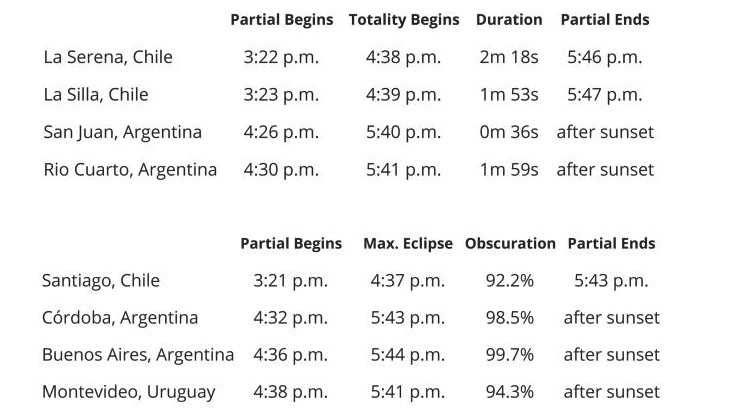
Will there be clouds?
Nothing can spoil an eclipse quite like Mother Nature. The mere sight of a single cloud can be enough to trigger anxiety among "eclipse chasers." When planning a trip to go see a solar eclipse, it's best to find a place where the climate tends to be dry in order to avoid the possibility of having pesky clouds rain on your parade.
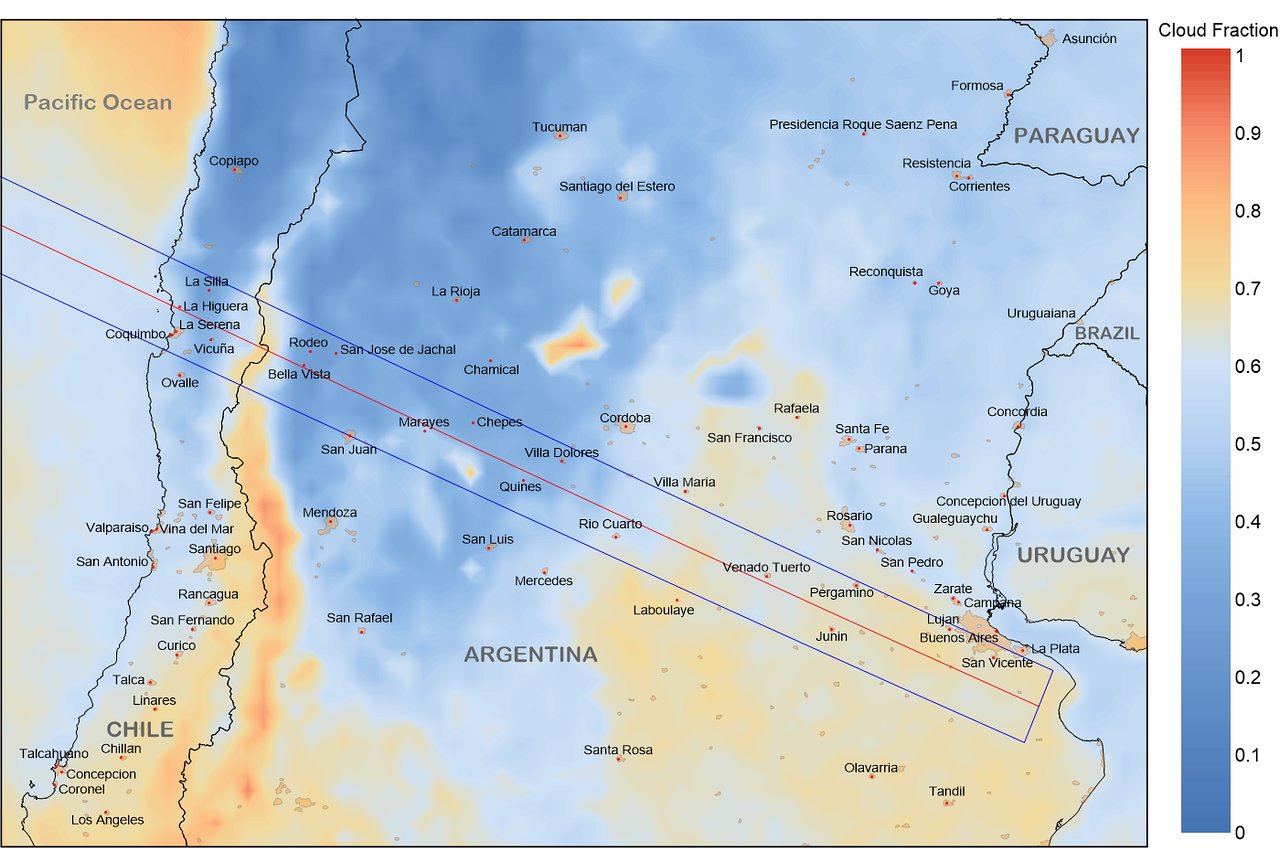
For the solar eclipse on July 2, the European Southern Observatory (which operates the La Silla Observatory in Chile) has issued a weather forecast based on more than a decade's worth of weather data. While the chance of clear skies is higher than the chance of overcast skies, there's still a good chance of a few clouds passing overhead.
At the La Silla Observatory, there's a 40% chance of a totally clear sky, a 55% chance that it will be partially cloudy, and a 30% chance of thick cloud coverage, according to ESO.
How to safely observe the eclipse
You've probably heard at some point in your life that it's a bad idea to stare at the sun. Well, that rule still applies during solar eclipses — but with one exception. During totality, when the sun is completely hidden from view, you can (and should) remove your eclipse glasses and take a look at the sun's beautiful corona. This is the ONLY time that it is safe to look at the sun without proper eye protection.
Aside from that brief moment of totality, you must wear proper eye protection when looking at the sun. Failure to do so can result in longterm or even permanent damage to your vision.
While eclipse glasses are the most common way that eclipse-watchers protect their eyes, there are other ways to observe a solar eclipse, too. And when purchasing eclipse glasses, always check to make sure that they're ISO certified, or they could be unsafe.
Got eclipse glasses left over from the 2017 eclipse? They may be safe to reuse, but you must make sure they have not been damaged.
Read more: Is It Safe to Reuse Your Solar Eclipse Glasses
Editor's Note: If you snap an amazing picture of the July 2, 2019 total solar eclipse and would like to share it with Space.com's readers, send your photos, comments, and your name and location to spacephotos@space.com.
- Solar Eclipses: An Observer's Guide (Infographic)
- Total Solar Eclipses: How Often Do They Occur (and Why)?
- Amazing Solar Eclipse Pictures from Around the World
Email Hanneke Weitering at hweitering@space.com or follow her @hannekescience. Follow us on Twitter @Spacedotcom and on Facebook.

Space.com is the premier source of space exploration, innovation and astronomy news, chronicling (and celebrating) humanity's ongoing expansion across the final frontier. Originally founded in 1999, Space.com is, and always has been, the passion of writers and editors who are space fans and also trained journalists. Our current news team consists of Editor-in-Chief Tariq Malik; Editor Hanneke Weitering, Senior Space Writer Mike Wall; Senior Writer Meghan Bartels; Senior Writer Chelsea Gohd, Senior Writer Tereza Pultarova and Staff Writer Alexander Cox, focusing on e-commerce. Senior Producer Steve Spaleta oversees our space videos, with Diana Whitcroft as our Social Media Editor.
